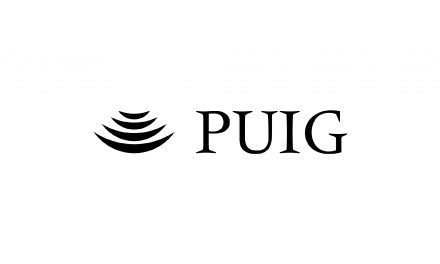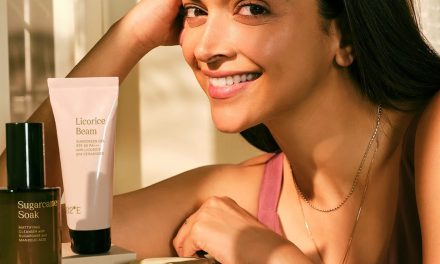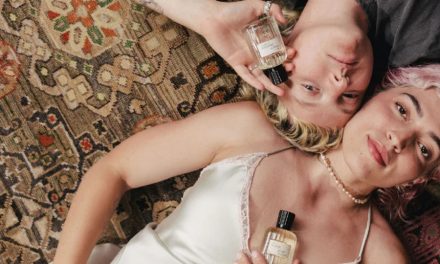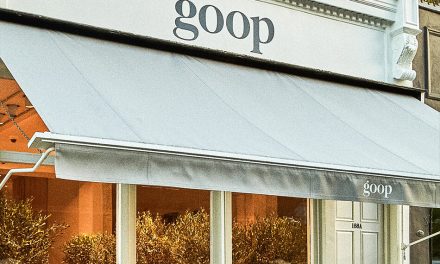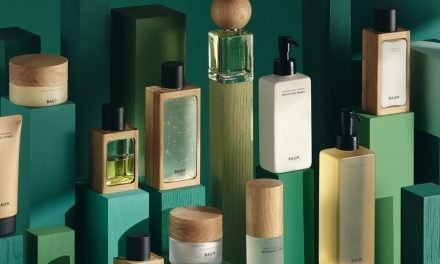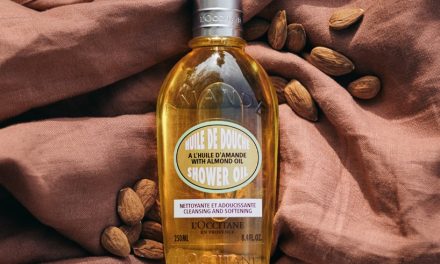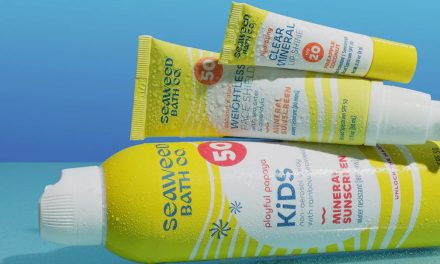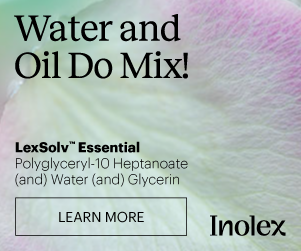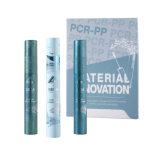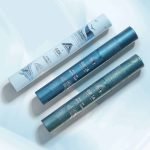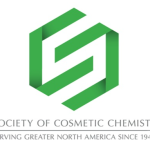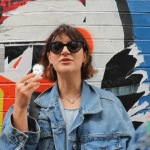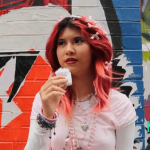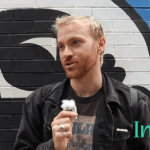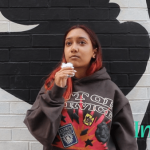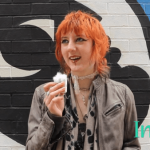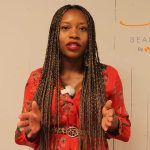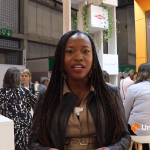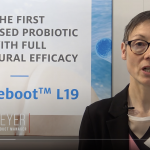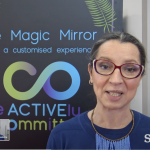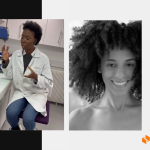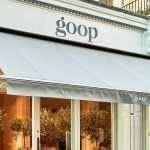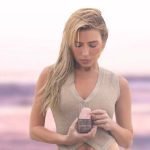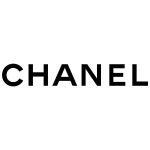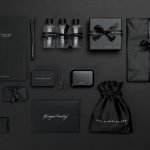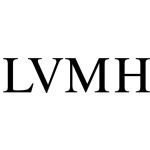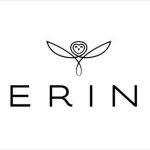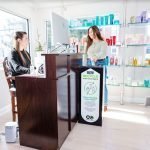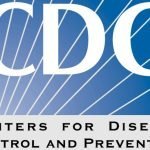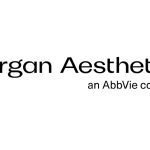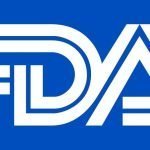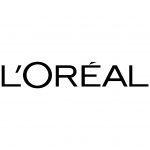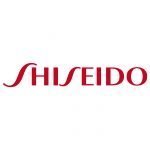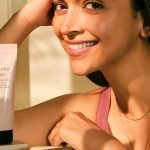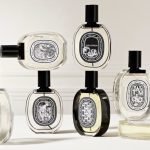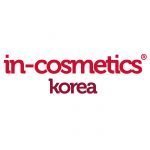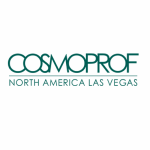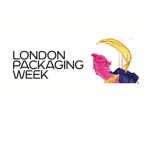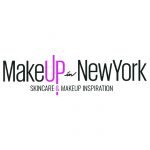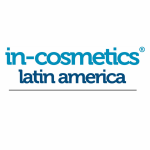
Open Podcast Transcript
Creating Cosmetics: Skin Care
Siobhan: Hello, and welcome to In Conversation With, the monthly podcast series brought to you by the team that produced the Global Cosmetics Newsfeed. This year’s theme is creating cosmetics, and this month’s topic is skincare. And I’m your host, Siobhan Murphy. The big question we’re addressing in 2024 is how we are creating cosmetics now.
Considering a potential political change on the horizon, the rise of global sustainability legislation, and a new driven approach to ingredient selection, the industry is on the cusp of a significant transformation. Today, with the help of my guests, we will delve into these topics by addressing the challenges facing our industry, while also highlighting the opportunities in this new era for skincare innovation.
But first, let me introduce you my panel. Hello to Anita Walford. Global Marketing Director, Technical Marketing Innovator, and Creator. A warm welcome back to Dominika Minarvoic and Elsie Rutterford, co founder of BYBI Beauty, the natural certified vegan and cruelty free skincare brand from London.
And a warm welcome back to Dr. Carol Treasure, founder of and CEO of XCellR8, the animal free safety testing service for the cosmetic and chemical industries. Welcome everybody. Anita, let’s start with you. What are the consumer challenges and where are the opportunities for creating skincare products in 2024?
Arnita Siobhan. Thank you so much for having me today. It’s really great to be on this hot topic skincare segment. Beauty is a hundred billion dollar industry globally and with that comes a lot of challenges. Actually, it’s always been a consumer centered industry, [00:02:00] but I think right now we have a huge problem of option overload.
There’s too many products, treatments. tools, hero ingredients. It’s a beauty maze, really. And I think we need to help customers navigate more than ever. And with social being such, a huge information source, it’s a major part of this consumer challenge. People don’t know who to trust. They don’t know what to trust. It’s hard to stay abreast. Even for us of all the new products, what’s going on, what’s best for your skin. And then if you layer all of that Our content from the industry, influencer content, brand messaging. It’s like a perfect storm for beauty burnout, quite frankly. I think that One of the places we have to start is really clear and simple communication. That’s a big challenge. There’s so many TikToks swirling in my head right now. you need a beauty PhD, really, to follow everything that’s going on. All the routines, all the trends. And it’s a lot of information. It’s a lot to decipher. It can be discouraging for some consumers, I think. But there’s opportunities in that as well. If we can simplify our product communication, if, the brands that are speaking to the consumers can do that with basic information that they can work with. I’m not suggesting that we issue an edit of beauty for dummies for every single product, but clear snackable content is a step in the right direction.
For sure. We’ve gone too far to the left. Skin is really hot right now. So let’s capitalize on that. But I think 2024 is going to show us that less is more and people are streamlining for a lot of different reasons, the market but also just out of personal demand and the request to search self and understand the skin and let the skin breathe. So I think that cost justification is also a white space that we really have to dig into. Duke culture is really exploding. You can love it or hate it, but it has a place and consumers, they’ve got a subjective feeling of what’s possible, what the product’s worth, this emotional connection to the product. And the result of that is basically people are Buying what they believe in, what they understand, and I think we, the more transparent we are and the more clear we are with our communication, we can help them solve those challenges.
Siobhan: Indeed. And at BYBI Elsie, are you dealing with a beauty maze? Is that your biggest challenge?
Elsie: Absolutely. I think that is really well said. I think, skincare is, the last couple of years have just been an explosion of choice, whether that be ingredients or just sheer amount of brands to market as well, as a brand currently in market, our level of competition has just increased tenfold.
The brands that we’re sat next to on shelf, there seems to be a new one kind of adding to that every day. So if we put ourselves into the consumer’s shoes, you know, it becomes harder and harder for them to navigate which brand to choose, let alone then which product type and which ingredients.
So the way that we’re trying to react to that at BYBI is, yeah, is this centering our ethos around simplicity moving away from the 10 step routine moving away from the complicated layering of ingredients that have been quite trendy in the past sort of couple of years buying. 12 different products to make 12 different hero ingredients to make up your skincare routine. Because I think aside from the fact that it’s overwhelming for the consumer to navigate that and difficult for them to understand what their skin truly needs and what’s right for them. We’ve also seen that it can end up.being quite damaging for skin because if you’re overusing or using incorrectly hero active ingredients that are actually very potent and very strong you can end up going on to cause more damage than good. And so I think what we’re really thinking about is supporting the skin, we’re speaking a lot about the microbiome and not damaging the skin barrier through the complexity of the routines of the ingredients that you’re using, but also just, [00:06:00] spoon feeding the consumer a product, maybe a one or two step routine that with products that have everything that your skin needs to have that efficacy piece, but also just your skin needs to stay generally healthy and strong.
So that’s really how we’re thinking about formulating and our sort of product assortment to really react to the challenges that the consumer kind of sees at the moment.
Siobhan : And do you think that the consumer needs a beauty PhD, Carol?
Carol: In some ways, yes, and I really echo all of the input from the other lovely panel members so far. I think that there’s definitely an option overload amongst consumers for beauty products at the moment. And we need to try to do our best to help them to navigate through that kind of jungle of information. Not only about the attributes of the product themselves, but also about the supply chain, the ethical aspects, sustainability aspects. Are they cruelty free? Are they vegan products? What percentage of natural ingredients are they? In addition to consumers being able to understand how the products are going to impact their skin and choosing the best product for themselves. It’s all about this values piece as well and how to choose products that line up with their own philosophies. I would say that, overlaying onto the comments that have come out so far, I would also add that there’s confusion around logos. Um, think we need to try and make that clearer in my own area around cruelty free and vegan beauty. There’s certainly an increasing number of logos now coming to the fore and each of them means something slightly different. There’s question marks around all of them. And I think that that’s definitely the confusion element. So there’s definitely clarity needed. And then just quickly, the other point I would say that Yes, people are looking for much more personalised products now. And hoping to find more inclusive products, more products that aim towards their age group, their particular skin type. So amongst all of those that are available, just trying to get to the information that they actually need, I think it seems like we’re all agreed that’s the biggest challenge that consumers are facing.
Siobhan: And thinking about simplification and personalized products, Arnita. What are the technical challenges and where are the opportunities for creating skincare products?
Arnita: So this is a topic close to my heart and close to the vest, really. And I’m just going to say it. I really and truly believe that AI driven tech is what’s going to push future product development to the next level. We’ve gotten a taste of personalization already. Carol was just mentioning it. There’s some brands already doing great things where you can take a selfie, get a, an immediate. Reading of what your skin needs and then order products based on that. And I think the taste in the consumer mouth of saying, ah, I can hyper personalize my serum, my moisturizer. I can analyze my skin now, that’s only going to get stronger and with more tech get better. I also think it’s going to bring about new ways of formulating right now. Product development has a specific timeline. A lot of that based on stability testing based on modeling whether or not your product is compatible with packaging, et cetera. And the tech piece is going to help us accelerate that, we already have so many options to power formulation improvement like simulators or stability predictors or screening for ingredient combinations, and that’s going to continue to build as well. And ultimately benefit the consumer by giving them. More precise products better efficacy, more information and also speed to market. And again, this goes back to what I said earlier about, helping them to decipher and giving them clear communication. And the more we can do things faster, not necessarily feeding the beast of giving them more product, more product, but giving them better product and more sustainable product. And product that is answering the questions that they have or responding to the needs that they are trying to cover, I think, is. where we’re going.
Siobhan: And at BYBI, Dominika, is AI driving your technical challenges?
Dominika: I think we are still figuring out how physical product and technology really can work harmoniously and more importantly, actually drive benefit for the consumer. I think where we’ve seen brands experiment with AI or any tech driven personalization, I’m just I’m not sure that it has really delivered that value for the consumers.
So where I wouldn’t say that we’ve got any strong AI initiatives, I think where I see the threat or opportunity for AI. In the product space is more on the services side, i. e. when we’re looking at accountancy, legal some, marketing agencies, I feel like that’s where AI is going to have an impact on our business ahead of really thinking about how we use it with products, because I think consumers are really far away from that.
And I’m just not sure it delivers value at this point because as we said, there’s so much complexity already just. Delivering the message to the consumer, what your product is and how to use it. On the most basic level in terms of what this serum or this moisturizer is to then add on that further complexity.
I just think we’re quite far away from that.
Siobhan: And Dr. Carol at XCellR8, what are your technical challenges and where are the opportunities for creating skincare products?
Carol: I guess my perspective is thinking about the testing of cosmetic products and ingredients. And in my experience in our work at the XCellR8 Lab, in terms of coming up with safety, data and claim support data for products. It relates to the comments around personalization. So just as one example, we’ve been using human reconstructed skin models to generate safety and efficacy data for some years now. But actually, Those skin models are almost always derived from Caucasian men, because that’s the source of the cells, that’s where they come from. So we’ve been looking closely at how we can develop a more diverse range of skin models, because if we want to make claims around personalized products, we need also to be able to test them in a personalized way to back up those claims. And just related to that, I do think that consumers are becoming more and more interested in the science behind the products and alongside that goes And we’ve been saying for a long time that not tested on animals should not mean not tested at all. It’s about flipping that question around from the negative, not tested on animals, to a positive. How do you test your products? And how do you still ensure that those products are safe and efficacious for consumers and their families to use? So everybody still wants those great products, and they want them delivered in an ethical way. So from our perspective on the testing side, it’s very much about providing inclusive testing diverse testing, also thinking about different age groups. Menopause skin products are really big right now.
So how can we look at that and specifically look at that skin in vitro in our lab? And I think that a lot of the products that are scientifically based they’ve got some very interesting actives in there. And sometimes the challenges, for example, I was talking on LinkedIn yesterday about retinol creams. And we know that retinol can cause skin irritation. So how can we formulate those creams, but still make sure that they’re mild, still make sure that they’re gentle on the skin. And in our experience, even though there’s a lot of claims that we can support, such as anti aging, anti inflammatory, antioxidant, all of those things, the one fundamental claim that most people still want to support is that the product is mild to skin. We need to make sure that we can still deliver that, even with much more complex active products that are coming through the pipeline.
Siobhan: And thinking about how consumers are more interested and researching the science, What are the environmental challenges and where are the opportunities for creating skin care products?
Arnita: So that’s a really good question. And I have been thinking about this for quite some time. The most recent news around a big brand going down that is Known for its sustainability and known for its eco consciousness was really shocking to me, and it brought To the attention at least to me to say sustainability is a really pressing topic, but it’s not a selling point It’s essential to survival for brands to address it through product launches through their line extensions, but retailers as well. We can’t keep talking about sustainability as a catch all, if you will. I think the initiatives around sustainability need to be Multi strategy in the approach. We have to ensure that the brand is not just producing more sustainably, but also it’s being infused into sourcing into the manufacturing. I read something just yesterday about how cosmetic products and I didn’t know this before, like travel something like 5 to 15, 000 miles. And that’s what really impacts the carbon footprint more than anything else. So if we’re looking at it. Improving the future and looking at some of these environmental challenges, like how do you tackle the sustainability problem in beauty? I think packaging is one way to go, we need to be looking at programs and how do we help consumers help themselves, the packaging problem, what’s recyclable, what’s not recyclable.
Do you have to take it apart? Do you have to put it in different bins? Can you just drop it off at a store? I think if we can help. Consumers participate, take away some of the question around what do I do and how do I feel good and how do I feel like I’m supporting the sustainability in beauty movement. I think that’s one way that we can tackle it. Another thing that I was thinking about as well is, industry leaders in beauty are taking. The time to set an example, but consumers are demanding, I feel a bit more precision to take the steps to decipher the lingo.
What’s again, going back to packaging Why glass? Why refills? Why is it not sustainable? Why is the carbon footprint X and not Y? These are some of the environmental challenges I think we’re having. And I don’t have answers to, to solving them, but I do think that it’s part of a conversation we need to be having more largely and more clearly with consumers.
Siobhan : So that leads me to BYBI, who started off as a sustainable brand. So in 2024, what are your environmental challenges and where are the opportunities for creating skin care products, Elsie?
Elsie: We, we would really like to see the conversation around sustainability and responsibility. We like to call it responsibility that feels broader and less greenwashed. Already that term sustainability is being thrown around willy nilly these days, very confusing for the consumer because there’s little regulation to, what is a sustainable product and what isn’t.
But What we’d like to see in terms of the conversation around responsibility within beauty is for it to really progress past packaging because it’s mainly been centered there. There are a lot of brands cropping up with either talking about the material of their packaging.
Obviously we’re seeing a lot of PCR. We use sugarcane polyethylene at BYBI and we’re very vocal about that. We See brands talking about the afterlife. So the of the product packaging, but I think what it really comes down to, and I need to hinted at this is it doesn’t really matter what the packaging is.
If the consumer doesn’t do the right thing with it, then it’s going to end up at landfill. And actually, if you’re a brand, if you’re a global brand, then, the directions and the way that you guide your consumer will be different based on the markets that you’re selling into. And that is actually so granular that even here in London, which is where we’re based the recycling guidance. differs by borough. I could live one mile away from somebody and, I literally have to dispose of something in a different way to somebody who lives up the road from me. So try and then, replicate that on a global scale. It’s very difficult and I think we have to accept that a lot of what we’re producing is going to end up at landfill despite our best efforts to use the best materials or encourage our consumers to do.
The heavy lifting of trying to reuse that packaging that ultimately is where it’s going to end up. So what can we do further forward in the supply chain to really minimize that product’s impact? So we’re thinking about the carbon footprint overall. We’re thinking a lot about our raws. There are some amazing suppliers doing some really interesting things with upcycled materials.
What can we pinch from? Other industries that would normally be a waste product and revive it provide nutrients and vitamins and antioxidants that we can use in our skincare products. That’s really exciting to us. I was speaking to a supplier last week who have developed a.
palm alternative that they’re essentially brewing in the same way that you brew beer out of yeast. There’s really interesting kind of biotech developments that are going on. How are we producing our products? Are we still using factories that are running on brown energy?
So I think for us, it’s moving the conversation away from being solely centered around packaging, looking at the holistic life cycle of a beauty product, and then really pinpointing where we can minimize The impact so that if the inevitable does happen and it does end up at landfill, at least the product’s impact to get it to the consumer.
And while they’re using it have been as minimal as possible.
Siobhan: And how at XCellR8 , Dr. Carol, are you helping that conversation move forward with your testing?
Carol: I think that the the term holistic is very important. We need to be thinking about the total life cycle of the product the product itself and the packaging, of course, I think one of the things that we come up against quite often in conversations with companies who test with us is thinking about the the sources of the ingredients.
Because clearly there’s a psychological connection that people make with natural ingredients perhaps automatically being better than synthetic ingredients. I myself am a big fan of natural ingredients. But if those natural ingredients are being grown on land that is then depriving local communities of valuable food crop production, it’s not sustainable and it’s not an ethical ingredient.
So I think that, again, there’s a need for transparency and going beyond the obvious to look at the overall environmental and social impact of the products as well. just in terms of the environmental testing it’s an interesting one for us at XCellR8. We are completely animal product free in our lab, so we do vegan testing. And that’s all very applicable when we think about human toxicity. When we start to think about environmental toxicity, how can we develop cruelty free tests for species in the environment? Because ultimately, we do need to be able to assess very carefully what happens when those products, those rinse off products, go down the drain into the system.
We are looking at developing some cell culture based in vitro tests. To cover the eco toxicity aspect. And clearly there’s a regulatory aspect of that needs to be covered as well. But we are finding that companies are more and more focused on that now. And it comes back to the previous point about the need for quantitative real data from the lab to show what happens to these products when they end up in the environment.
Siobhan : Indeed. And thinking about how products end up in the environment, Arnita, what are the regulatory challenges and where are the opportunities for creating skincare products?
Arnita: As a former formulator I think regulatory has always been one of the biggest areas of confusion and headaches when it comes to making products. There’s always something new that’s Requiring you to reformulate good or bad. Thinking about some of just the latest things I’ve seen, the vitamin A derivative limitation, the new cyclic silicone limitations specifically in Europe, are going to require reformulations. Now, I would say that’s an opportunity and not a, not an issue because ultimately with all of the new ingredients and as I think it was Dominika that hinted at this, there’s a lot of great. New ingredients being launched by ingredient suppliers. So if you look at if we talk about upcycled ingredients not every brand is using them, but it’s an opportunity to tell a story, right? There’s a lot of biotech out there. There’s a lot of initiatives across the industry that can be part of the story, the origin story that the brand can share about their products.
And there’s also new ingredients. From waste products from other industries that are giving us better technology, think about sources for thickeners or jelling agents. So we have the opportunity to take a regulatory issue and make it. A way or a time to better a formulation, whether that’s through texture improvements, whether that’s making it more potent or less potent, making it more efficacious for the consumer, taking that time to decrease costs, whatever it is, but making the formulators time worthwhile, not just going in and making that one change.
So I think I would say there’s a lot of challenges in the regulatory space. But the opportunity is to make sure that the formulation comes out better for it.
Siobhan: And is that the case at BYBI,
Dominika: Yeah, I think we’re always. On the receiving end of regulation and reacting to it. But I think I agree that, there’s so much development and innovation and it’s been amazing to see actually, coming specifically from the natural space where we started eight years ago to where we are now in terms of the sophistication of raw materials and how regulatory has really supported that innovation, pushing safety and efficacy. I think it’s really exciting and we’re in a sea of brands and products to still be able to innovate and have really new, exciting raw materials come to market as a result of regulation, I think it keeps. Brands propelling forward. And it’s still driving for great products for their consumers, which ultimately is what we’re always trying to do through innovation is it’s improve on either something that already exists in market or we produce ourselves and develop a better customer experience and a better efficacious result for our customer.
So I think, regulation for us is challenging when it comes to global regulation and the differences between territories. Elsie touched on, the example of recycling, but cosmetic regulation in some ways is as complex and there’s so many nuances between labeling UK now, even.
So it’s an investment that a brand has to keep on top of from that perspective. But I think when you’re looking at a formulation. The formulation space in the raw material space. I think it really drives innovation and opportunity.
Siobhan: And XCellR8 , Dr. Carol, what are the regulatory challenges for your company?
Carol: Well, As a testing lab, we’re navigating these regulatory challenges on a daily basis with our clients, and I do think that there’s a definite need, certainly in the UK, for more clarity on these issues, particularly from the point of view of, animal testing versus non animal testing. We all thought that we had left animal testing for cosmetics well behind us until a bit of confusion really over the last year in terms of the licenses that were granted to certain companies by the government. So we think that we’ve now got that clarity that the cosmetics testing ban the animal testing ban is being upheld but I think this all adds to the confusion for the industry and for the public. In addition to that, the ingredient suppliers in our industry have been working very hard to comply with the EU version of the REACH regulation for chemical safety. We now have UK REACH coming into force and for many companies, This is going to involve a repeat testing. So they’ve already invested in making sure that they’re compliant with EU REACH. But because of some complications about the carryover of data, they’re going to have to perform that testing again. And I think that what we’re going to see is that the cost implications of that are going to filter through the supply chain. It could end up that products are more expensive as a result. All of this regulatory change that we’re seeing and then clearly we have new green regulations coming through the pipeline as well.
I think that’s something that relates back to the point about environmental aspects but it’s certainly a bit of a minefield at the moment. And I think that hopefully one of the topics that. really needs to be impressed upon the incoming government from the chemical industry point of view, which includes of course all the cosmetic ingredients, is that we need clarity.
What needs to be done? What are the expectations? And that is certainly a big challenge at the moment.
Siobhan: And finally, our new quick Arnita, describe the future of skincare market in three words.
Arnita: going to say it will be curated, it will be scientific, and it will be fun.
Siobhan: Love it. And, Elsie, for you?
Elsie: A simple biotech and enjoyable.
Siobhan: And how about you, Dominika?
Dominika: I think innovative, efficacious, and inspiring.
Siobhan: And finally, Dr. Caroll what is the future of skincare market in three words?
Carol I’d say ethical, exciting, personalized.
Siobhan: And with that, I would like to thank my guests, Arnita, Elsie, Dominika and Dr. Carol for joining me today and to you for listening.
The big question we’re addressing in 2024 is how we create cosmetics now—considering a potential political change on the horizon, the rise of global sustainability legislation, and a more hazard-driven approach to ingredient selection. The industry is on the cusp of significant transformation.
Arnita Wofford – Global Marketing Director, Technical Marketing Innovator, and Content Creator.
Dominika Minarovic and Elsie Rutterford, Co-Founders of BYBI Beauty, the natural, certified vegan, and cruelty-free skincare brand from London.
Dr. Carol Treasure, Founder & CEO at XCellR8, offering animal-free safety testing services for the cosmetic and chemical industries.
We delve into these topics by addressing the challenges facing our industry while also highlighting the opportunities for skincare innovation in this new era.


